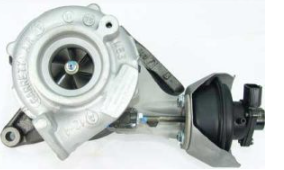Turbochargers are no longer reserved for high-performance sports cars. Over the past few decades, they have become standard in everyday passenger vehicles, commercial fleets, and even heavy-duty machinery. Their popularity is largely due to their ability to provide more power from smaller engines while simultaneously improving fuel efficiency and lowering emissions.
However, like all mechanical components, turbochargers wear out over time. When that happens, vehicle owners are faced with a choice: replacement or refurbishment. Turbo refurbishment has emerged as a reliable, eco-friendly, and cost-conscious option that restores functionality while extending the life of the unit.
This article dives deep into the concept of turbo refurbishment, why it matters, its benefits, and how it contributes to the bigger picture of sustainable automotive practices.
The Growing Importance of Turbochargers
A turbocharger harnesses exhaust gases to spin a turbine, which in turn compresses incoming air before it enters the combustion chamber. This higher air density allows more fuel to burn efficiently, resulting in a powerful output from a relatively small engine.
Manufacturers have leaned heavily on this technology to meet increasingly strict emission standards without compromising performance. Today, turbochargers can be found in everything from compact city cars to long-haul trucks, playing a vital role in balancing performance and efficiency.
With so much dependence on turbos, it becomes crucial to ensure their longevity, and that is where refurbishment enters the conversation.
What Does Turbo Refurbishment Mean?
Turbo refurbishment is the process of restoring a worn or underperforming turbocharger to a condition where it can continue functioning effectively. Unlike simple repair, which might only address a single issue, refurbishment aims to evaluate the entire unit, correct defects, and ensure the turbo meets specifications close to its original performance.
This is particularly relevant as modern turbochargers have become more complex, often featuring variable geometry vanes, electronic actuators, and advanced sealing technologies. A refurbishment carried out by qualified professionals ensures these features are preserved and restored as intended.
Why Choose Turbo Refurbishment Over Replacement?
1. Economic Advantages
A new turbocharger can represent a major expense for both individual drivers and fleet operators. Refurbishment often provides an option that extends the life of the existing unit, avoiding the need for premature replacement.
2. Environmental Responsibility
Manufacturing a new turbocharger consumes raw materials such as steel alloys, aluminum, and rare metals. By refurbishing existing units, the industry reduces waste and contributes to sustainable practices that align with the growing push toward greener automotive solutions.
3. Performance Recovery
When a turbo is refurbished to proper standards, its efficiency, responsiveness, and power delivery can be significantly restored. Drivers can once again enjoy strong acceleration, reduced lag, and optimized fuel efficiency.
4. Prolonged Usability
Refurbishment allows the main structure of the turbo — often still in good condition — to be reused, significantly extending its service life and offering a practical alternative to discarding the entire component.
Indicators That Turbo Refurbishment May Be Required
Vehicle owners should pay attention to specific warning signs that could suggest a turbo is in decline:
-
Loss of power during acceleration or unusual lag
-
Excessive smoke emissions, often dark or bluish in color
-
Whistling, whining, or grinding sounds from the engine bay
-
Sudden increase in oil consumption
-
Warning lights or error codes related to engine efficiency
These signs may point toward turbo inefficiency, but only professional evaluation can confirm whether refurbishment is possible or if replacement is necessary.
Technical Considerations in Refurbishment
The refurbishment of a turbocharger is highly technical, as the unit operates at speeds exceeding 100,000 RPM and is exposed to extreme temperatures. Even the slightest imbalance can lead to catastrophic failure.
Key technical aspects include:
-
Balancing precision: Turbine and compressor wheels must be aligned to extremely fine tolerances.
-
Material stress checks: Components are exposed to constant cycles of heat and pressure, which can lead to fatigue or cracking.
-
Variable geometry turbos: These systems require careful adjustment to restore vane movement without compromising reliability.
-
Actuator integrity: Electronic actuators must be tested to ensure proper communication with the engine control unit (ECU).
The precision required is why refurbishment should never be attempted without the correct expertise and specialized equipment.
The Broader Value of Turbo Refurbishment
For Individual Drivers
Refurbishment offers an accessible way to keep vehicles running at peak efficiency, avoiding unnecessary replacement while still maintaining strong engine performance.
For Fleet Operators
Fleet vehicles often run at higher mileage and place greater stress on turbochargers. Refurbishment helps keep operating costs manageable and vehicles compliant with emissions standards.
For the Automotive Industry
The practice supports a circular economy, reduces manufacturing demand, and creates a specialized market that values expertise and sustainability.
The Environmental Perspective
In a world increasingly conscious of carbon footprints and resource scarcity, turbo refurbishment plays a surprisingly important role. By reusing key components instead of discarding entire units, refurbishment conserves metals, reduces energy use, and helps align the automotive industry with sustainability goals.
This environmental advantage becomes even more significant when multiplied across thousands of vehicles and fleets that rely on turbochargers.
How to Approach Turbo Refurbishment
For vehicle owners, the path to refurbishment begins with recognizing the signs of turbo wear and consulting a qualified professional for evaluation. While some turbos may be beyond refurbishment due to severe damage, many can be restored effectively.
When considering options, always aim to find a specialist near you who can provide the technical expertise required to ensure your turbo operates safely and efficiently.
Conclusion
Turbo refurbishment is more than just a mechanical service — it is a sustainable, practical, and performance-driven solution that keeps vehicles operating at their best. With turbochargers becoming increasingly vital in the automotive landscape, refurbishment offers drivers, businesses, and the environment clear advantages.
By extending the life of these high-performance components, reducing waste, and restoring efficiency, turbo refurbishment represents a forward-looking approach to vehicle maintenance. In an era where efficiency and responsibility go hand in hand, it is a choice that benefits both drivers and the wider world.




